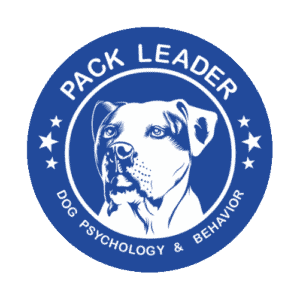Dog Training, everyone has heard of it. Dog Psychology, not so much. Somewhere in history, society’s notion of achieving a well behaved dog became based on obedience (sit, stay, down, come, heel, etc.) Dog Psychology is something that most people, including many “dog trainers,” don’t know about or really understand which, in my opinion, is why so many people are not finding success in achieving a balanced and well behaved dog.
For me, Dog Training today is based more on the human’s needs than the dog’s needs. It’s something that has been created by humans that teaches a dog to listen to commands that suit our needs but doesn’t take into account the needs of a dog.
Don’t get me wrong, I think obedience, commands and Dog Training in general are great but I think that so many “dog trainers” are dropping the ball by not educating humans on Dog Psychology before moving into Dog Training. What good is it to have a dog that can sit on command but lunges aggressively at other dogs on the street? How about the dog knows to lay down on command but tries to bite guests entering the home?
The question you’re probably asking is, Steve, what the hell is Dog Psychology? I feel Dog Psychology is something that was created by Mother Nature. It’s learning about the instincts of a dog and working with them, not against them. It’s learning about energy, being able to assess it in both a dog and yourself. It’s about fulfilling your dog mentally and physically through structured exercise. It’s about providing discipline through rules, boundaries and limitations that give a dog a crystal clear understanding of what is expected of them. It’s about understanding that dogs are indeed pack animals with distinct positions within the pack. It’s about understanding leadership through calm assertive energy, techniques and so much more.
Just recently, I did an in-home private training session for someone who owned an “aggressive dog” that had worked with numerous dog trainers, most recently a trainer they had been working with for over 6 months. In those 6 months, they constantly practiced obedience, commands, using food as a distraction and so on. The owners were seeing little to no results and in 6 months the trainer never touched the dog (out of fear). Eventually the trainer recommended a last resort of medicating the dog which is so common in this day and age. This was a dog that was lunging at other dogs and people on the street, biting people in the home and overall creating a miserable home life for his dedicated owners. Owner effort and commitment was not the issue here. The issue was they had learned everything about “Dog Training” but nothing about “Dog Psychology.”
I can’t tell you how many dogs and owners I’ve worked with that have been through similar situations. Within the 1st session with this dog we were able to have the dog calmly walking on leash, not reacting, relaxing in the home and ended with him sitting on an outdoor staircase next to me with my arm around him licking my face. How did we accomplish in such a short time what so many others couldn’t in many months of work? We used Dog Psychology! We weren’t doing training based on our needs and only what we wanted. The 1st thing I did when I walked in was assessed the dog’s energy to understand what he was going through. “Dog Training” labeled him as aggressive. Dog Psychology, told me he was an insecure, highly excited dog who felt the need to fulfill a void in leadership of his pack. By taking back the leadership position, we took a huge weight off this dog’s shoulders. He no longer felt the pressure of being leader, something he had no idea how to do. In turn, this has helped him gain confidence. We corrected any forward behaviors towards dogs and people (growling or lunging) which taught him that when he became unsure, attacking was not an option. We worked on slowing his brain down to lower his excitement levels by waiting to do things and only getting things when he was calm. His owners let us know that he’s made tremendous progress and it’s been life changing. He is currently part of our Structured Dog Walking Program where he happily walks with other dogs on a daily basis.
Let’s be clear, in no way am I trying to brag or put down other trainers. In fact it’s quite the opposite. I’m hoping to bring awareness to my field of “dog training” so that more people in my profession can educate the world on Dog Psychology before Dog Training. Every year in the United States we are killing 1.2 million dogs and spending over $2 billion in tax payer dollars to do so. You read it right, $2 billion! There are so many dogs and owners who need help. For so much of our history we’ve been blaming the dogs and blaming different breeds. In my opinion, as a nation we are ignorant when it comes to the behavior of dogs. We as humans are to blame, not the dogs. The only way we can change these horrible statistics is by educating the world on Dog Psychology.
By understanding Dog Psychology first, Dog Training becomes the easy part. Instead of just labeling a dog as “aggressive” and teaching them to obey human made commands with food bribery and no regard for what they are going through, let’s assess a dog’s energy and understand what they are trying to tell us. When we can understand that the “aggressive” dog is in reality a dog that is insecure, lacking structure, not receiving enough exercise and in a leadership position they didn’t choose, we now have a game plan to work together with the dog to achieve a state of balance. Instead of forcing commands on a dog, let’s listen to the dog who is desperately asking for help but has no one able to listen. By becoming educated in Dog Psychology first we can understand who the dog is and what they need to become balanced. A dog who is in the follower position, receiving sufficient mental and physical exercise and receiving clear rules, boundaries and limitations is the easiest dog to train.
As a nation, we owe it to the dogs to educate ourselves on Dog Psychology before we even attempt Dog Training.

![puppy-walk[1] puppy-walk[1]](https://packleaderdogs.com/wp-content/uploads/elementor/thumbs/puppy-walk1-qfbdymu2kxbpw65swi67mecrcys8pvvx8oe9sju8aw.jpg)
![Puppy walk[1]](https://packleaderdogs.com/wp-content/uploads/2023/06/puppy-walk1-300x200.jpg)

